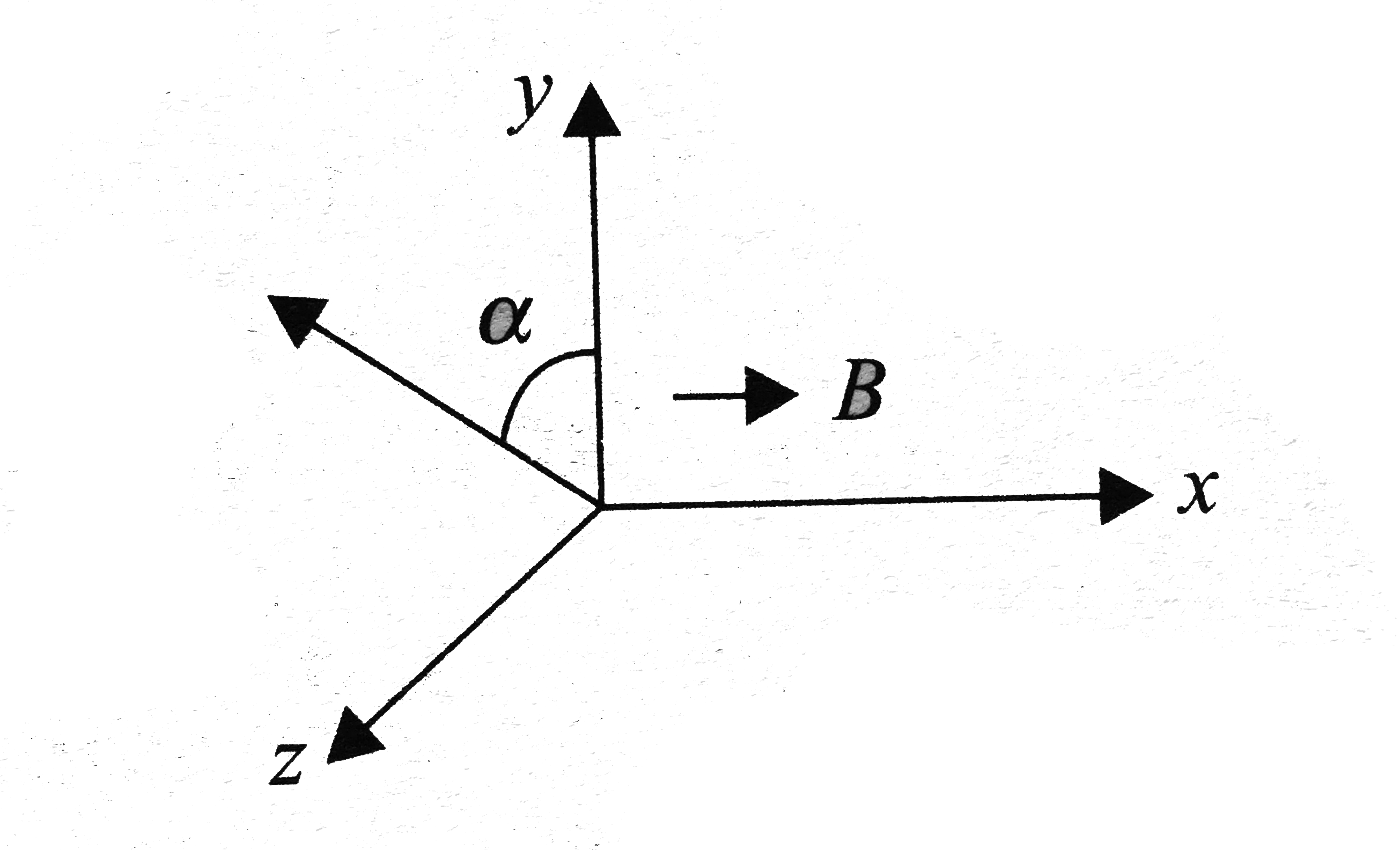A uniform magnetic field B exists in a region. An electrons projected perpendicular to the field goes in a circle. Assuming Bohr's quantization rule for angular momentum, calculate (a) the smallest possible radius of the electrons (b) the radius of the nth orbit and (c) the minimum possible speed of the electron.
The correct Answer is:A, B, C
According to Bohr's quantization rule
mvr=nh2π
'r' is less when 'n' has least value i.e. 1
or mv=nh2πr…(1)
Again, r=mvqB …(2)
From (1) and (2) rqB=nh2πr [From (1)]
implies r2=nh2πreB [:'9=e]
implies r=√h2πeB[ Hence n=1]
(b) For the radius of nth orbit,
r=√nh2πeB
(c) mvr=nh2π r=mvqB
Substituting the value of 'r' in (1)
mv×mvqB=nh2π
implies m2v2=nheB2π [n=1q=e]
implies v2=heB2πm2
or v=heB2πm2
Topper's Solved these Questions
- BOHR'S MODEL AND PHYSICS OF THE ATOMBOOK - HC VERMA ENGLISHCHAPTER - BOHR'S MODEL AND PHYSICS OF THE ATOMEXERCISE - Short Answer
10 Videos
- BOHR'S MODEL AND PHYSICS OF THE ATOMBOOK - HC VERMA ENGLISHCHAPTER - BOHR'S MODEL AND PHYSICS OF THE ATOMEXERCISE - Obejective - II
5 Videos
- ALTERNATING CURRENTBOOK - HC VERMA ENGLISHCHAPTER - ALTERNATING CURRENTEXERCISE - Short answer
14 Videos
- CAPACITORSBOOK - HC VERMA ENGLISHCHAPTER - CAPACITORSEXERCISE - short answer
7 Videos
Similar Questions
Consider a neutrom and an electron bound to each other due to gravitational force. Assuming Bohr's quantization rule angular momentum to be valid in this case, derive an expression for the energy of the neutron-electron system.
View SolutionAn electron orbiting around a nucleus has angular momentum L. The magnetic field produced by the electron at the centre of the orbit can be expressed as :
View SolutionAn electron is orbiting is a circular orbit of radius r under the influence of a constant magnetic field of strength B. Assuming that Bohr postulate regarding the quantisation of angular momentum holds good for this elerctron, find
(a) the allowed values of te radius r of the orbit.
(b) the kinetic energy of the electron in orbit
(c ) the potential energy of insteraction between the magnetic moment of the orbital current due to the electron moving in its orbit and the magnetic field B.
(d) the total energy of the allowed energy levels.
(e) the total magnetic flux due to the magnetic field B passing through the nth orbit. (Assume that the charge on the electronis -e and the mass of the electron is m).
View SolutionWhich of the following angular momentum is not possible for electron in Bohr’s orbit?
View SolutionA uniform electric field and a uniform magneitc field exist in a region in the same direction An electron is projected with velocity pointed in the same direction the electron will
View SolutionA uniform but increasing with time magnetic field exists in as cylindrical region. The direction of force on an electron at P as

View SolutionIn a region of space, a uniform magnetic field B exists in the x-direction. An electron is fired from the origin with its initial velocity u making an angle α with the y direction in the y-z plane. In the subsequent motion of the electron,

View SolutionA uniform magnetic field acts right angles to the direction of motion of electrones. As a result, the electron moves in acircular path of radius 2 cm. If the speed of electrons is doubled, then the radius of the circular path will be
View SolutionAn electron moves with a constant speed v along a circle of radius r.(a) find the equivalent current through a point on its path.(b) Find the magnetic moment of the circulating electron.(c ) Find the ratio of the magnetic moment to the angular momentum of the electron.
View SolutionA 10kg satellite circles earth once every 2hr in an orbit having a radius of 8000km. Assuming that Bohr's angular momentum postulate applies to satellites just as it does to an electron in the hydrogen atom, find the quantum number of the orbit of the satellite.
View Solution
